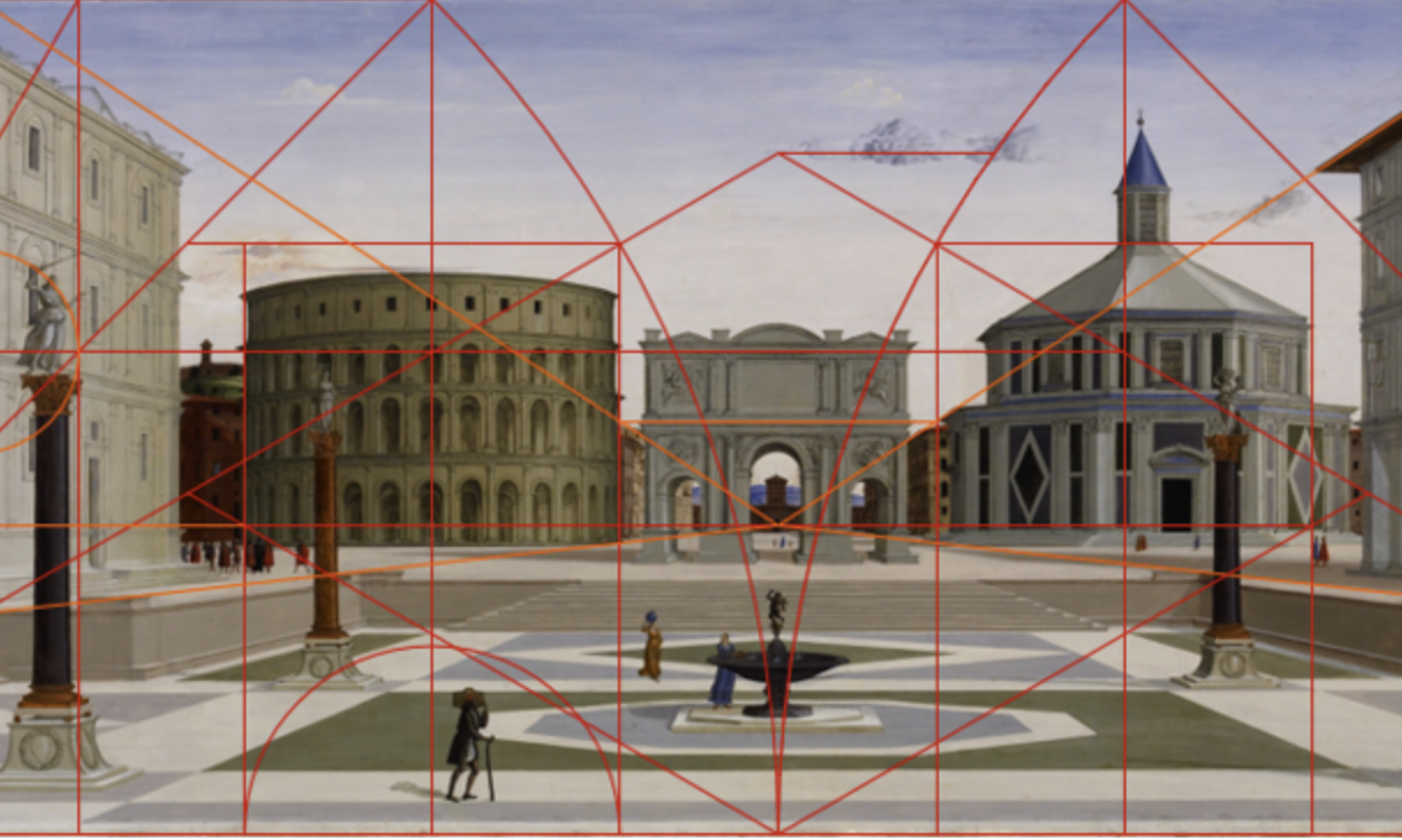 This panel of Mars and Venus has a fairly subtle proportional scheme based, rather surprisingly, on the idea of decagonal symmetry ; several steps will be necessary to see this. The first clue in this direction may be seen near the bottom right corner, where the sharp reflection in the shoulder joint of Mars’s discarded armor has the characteristic 72-degree slope characteristic of decagons. Not only the angle but also the location of this reflection line proves significant.
This panel of Mars and Venus has a fairly subtle proportional scheme based, rather surprisingly, on the idea of decagonal symmetry ; several steps will be necessary to see this. The first clue in this direction may be seen near the bottom right corner, where the sharp reflection in the shoulder joint of Mars’s discarded armor has the characteristic 72-degree slope characteristic of decagons. Not only the angle but also the location of this reflection line proves significant. When one inscribes the biggest possible half-decagon in the panel, with its center aligned with with the bottom edge of the painting, one finds that its right facet coincides with the reflection line in the armor, and with the angle of Mars’s shoulders. The radii of the decagon also seem to pick out various elements in the panel, including (from left to right) Venus’s leg, her shoulder, her child’s hand, the positions of the smaller putti in the background, and the placement of Mars’s right hand and shoulder.
When one inscribes the biggest possible half-decagon in the panel, with its center aligned with with the bottom edge of the painting, one finds that its right facet coincides with the reflection line in the armor, and with the angle of Mars’s shoulders. The radii of the decagon also seem to pick out various elements in the panel, including (from left to right) Venus’s leg, her shoulder, her child’s hand, the positions of the smaller putti in the background, and the placement of Mars’s right hand and shoulder. Here, as a preparatory step, two circles have been stacked within the height of the panel.
Here, as a preparatory step, two circles have been stacked within the height of the panel. The line through the center of the upper circle corresponds closely to the horizon line, while the lower horizontal aligns with Mars’s left wrist and chin.
The line through the center of the upper circle corresponds closely to the horizon line, while the lower horizontal aligns with Mars’s left wrist and chin. Most importantly, though, green lines through the corners of the decagon intersect the upper yellow horizontal precisely at the left and right margins of the panel, suggesting that its aspect ratio was determined by this construction. Further evidence for the relevance of the green lines comes from the way the descending one aligns with the faces of Venus and her child, Mars’s left leg, and the bottom edge of his discarded armor, while the right one aligns with Venus’s finger, her genital, and Mars’s right knee, arm, and shoulder.
Most importantly, though, green lines through the corners of the decagon intersect the upper yellow horizontal precisely at the left and right margins of the panel, suggesting that its aspect ratio was determined by this construction. Further evidence for the relevance of the green lines comes from the way the descending one aligns with the faces of Venus and her child, Mars’s left leg, and the bottom edge of his discarded armor, while the right one aligns with Venus’s finger, her genital, and Mars’s right knee, arm, and shoulder. This painting is the property of the Gemäldegalerie in Berlin, Germany. This analysis was based on the image: https://commons.wikimedia.org/wiki/File:1505_Piero_di_Cosimo_Venus,_Mars_and_Cupid_anagoria.JPG
This painting is the property of the Gemäldegalerie in Berlin, Germany. This analysis was based on the image: https://commons.wikimedia.org/wiki/File:1505_Piero_di_Cosimo_Venus,_Mars_and_Cupid_anagoria.JPG
